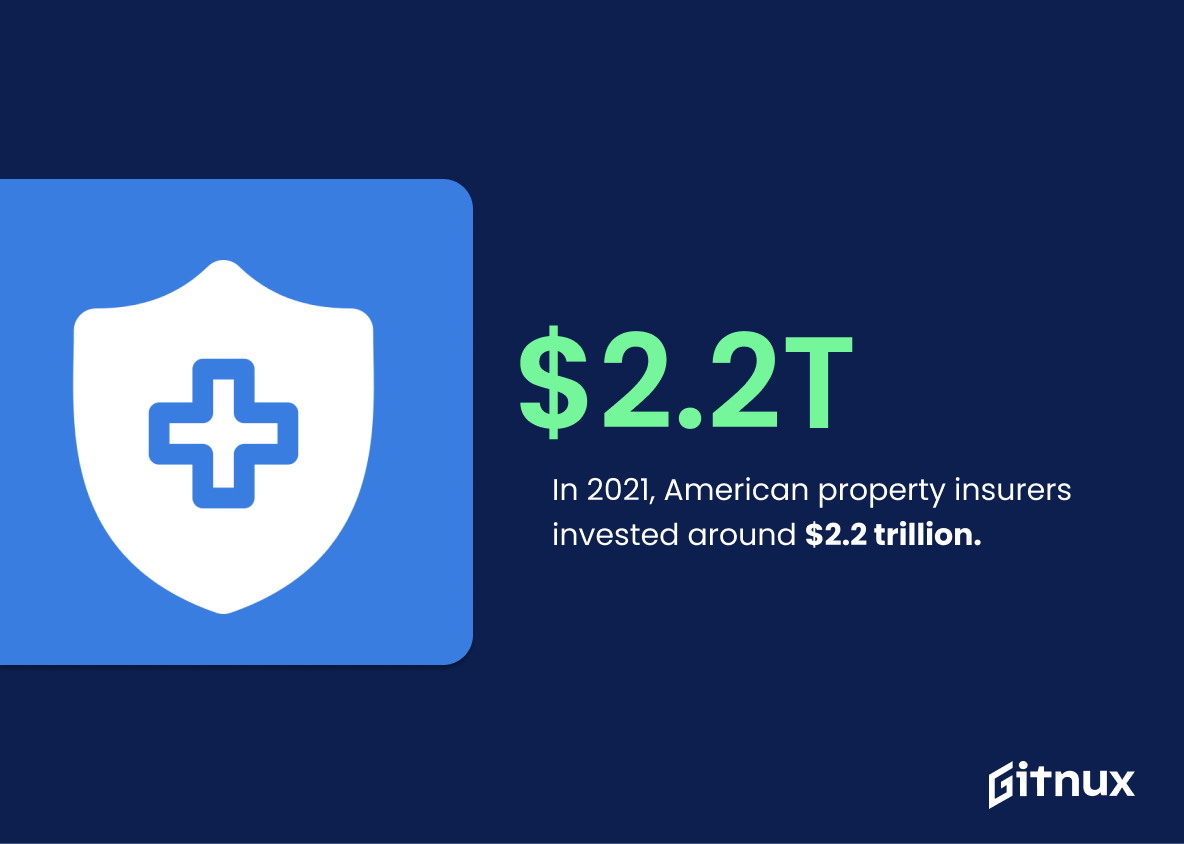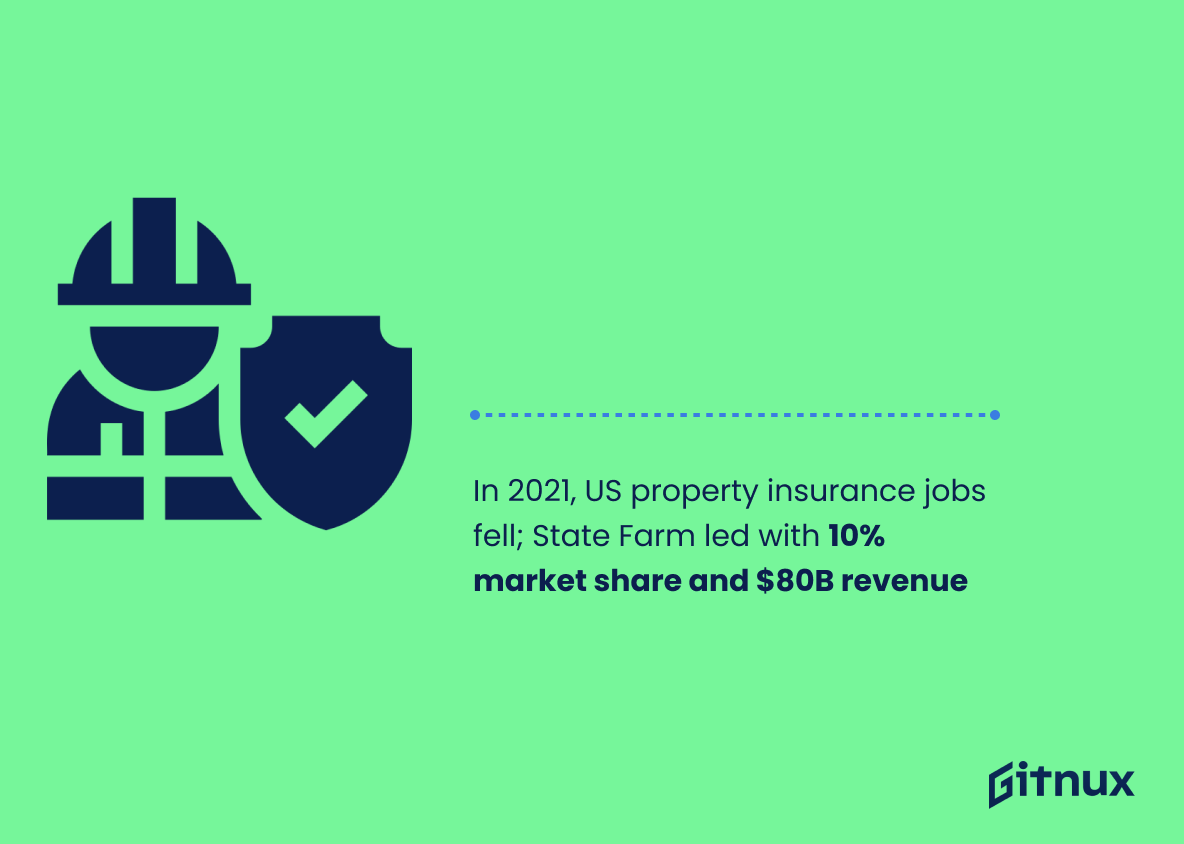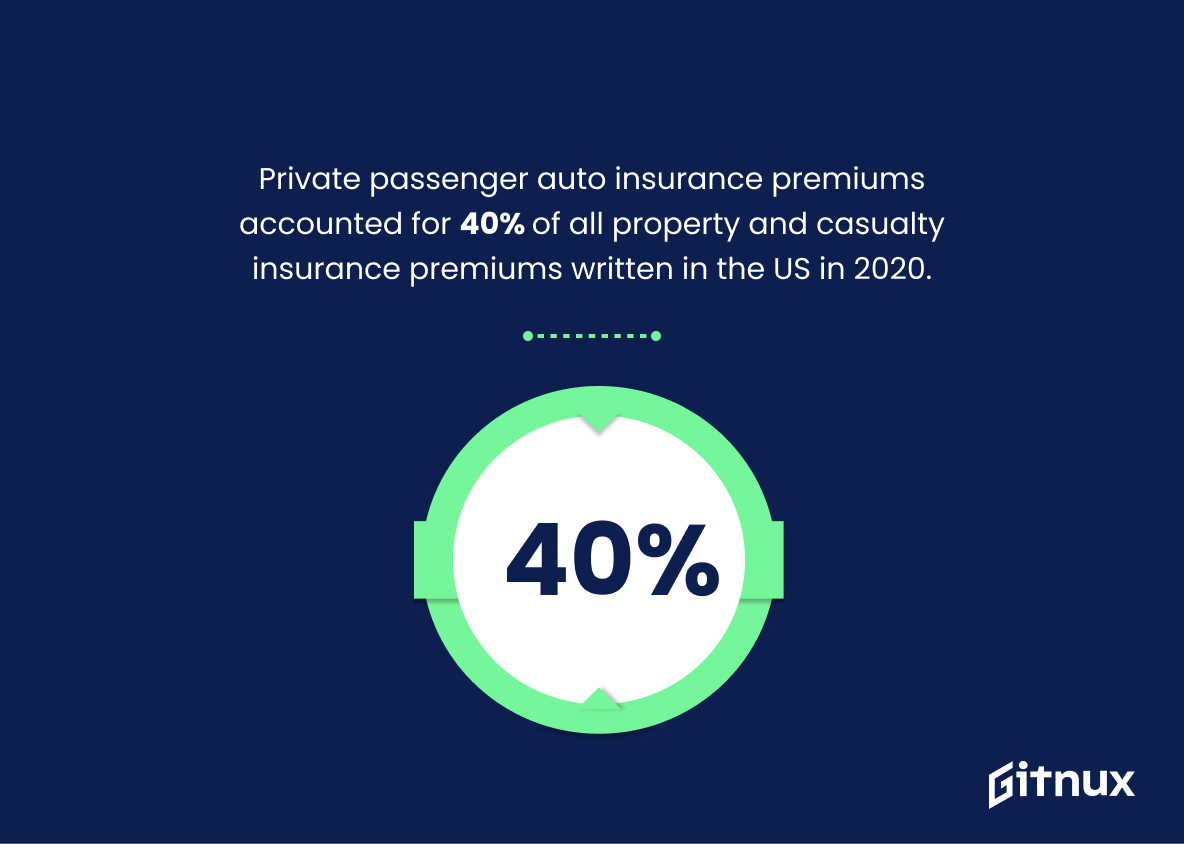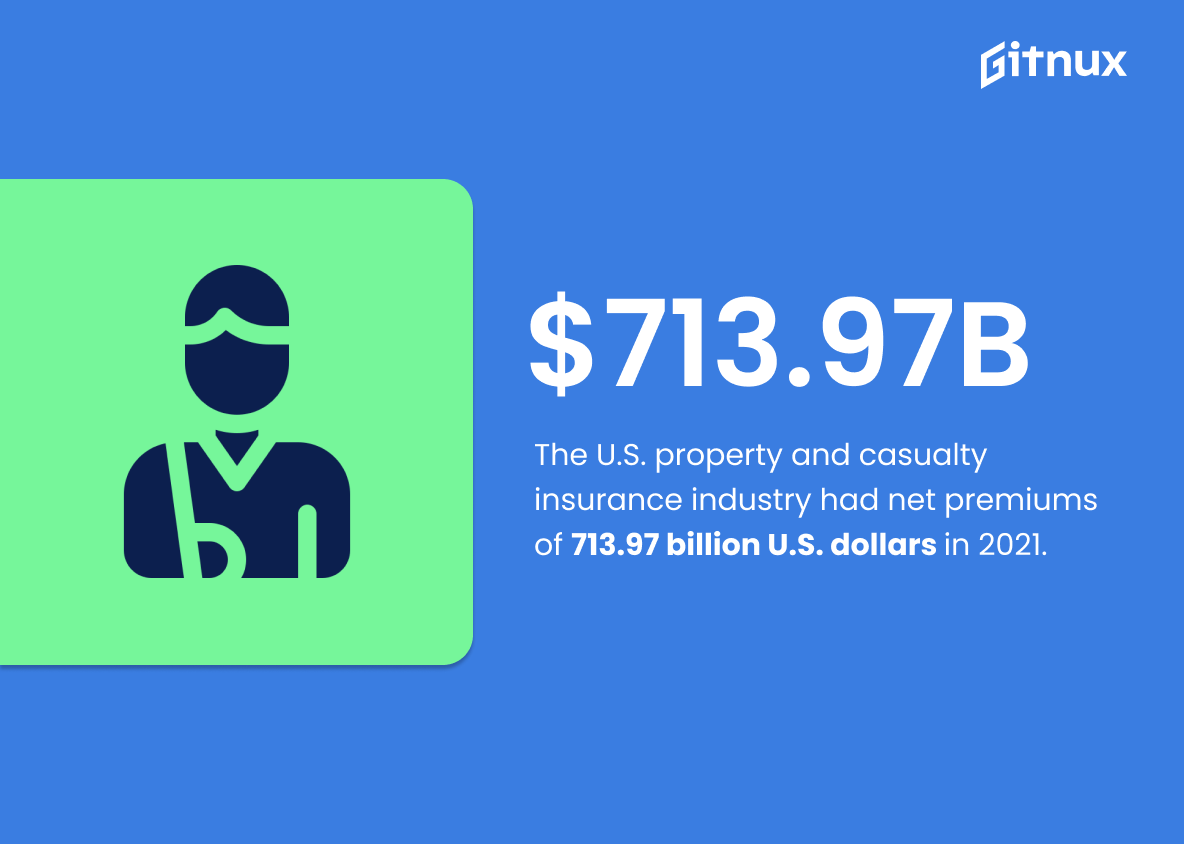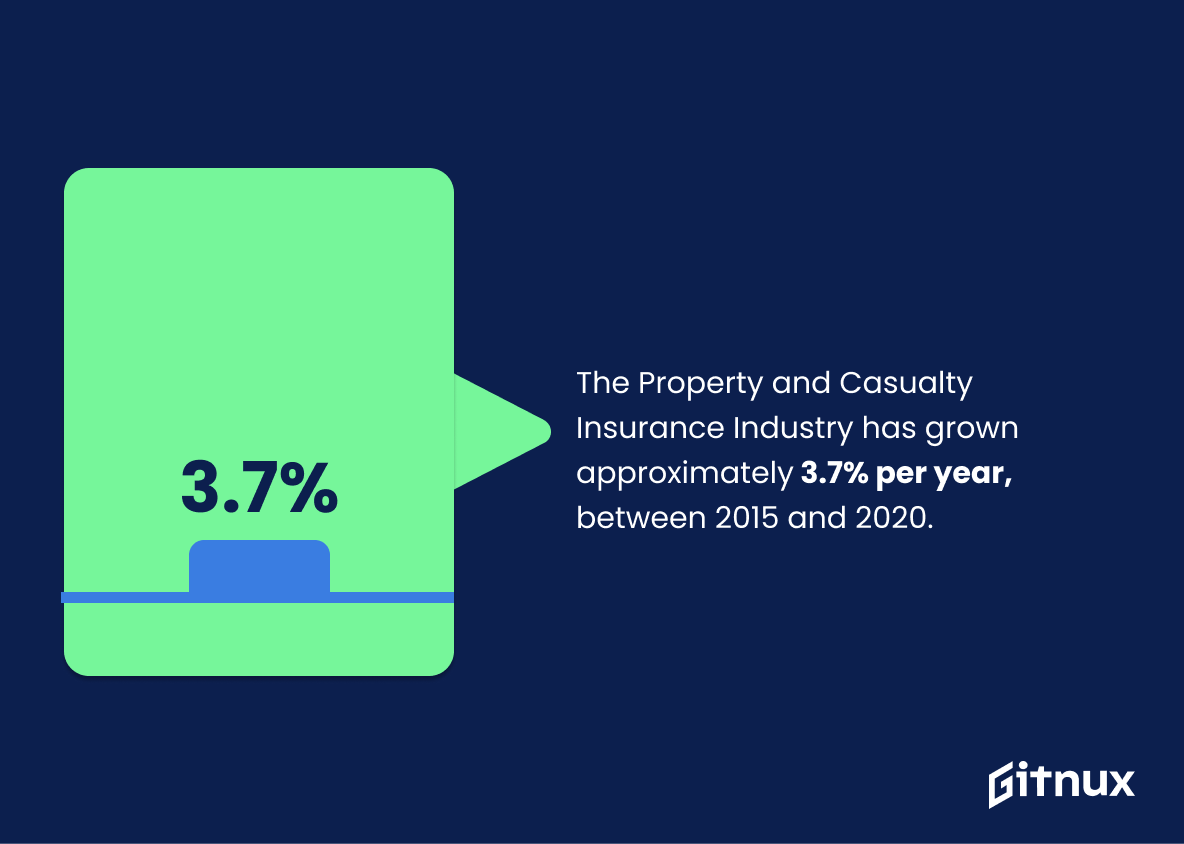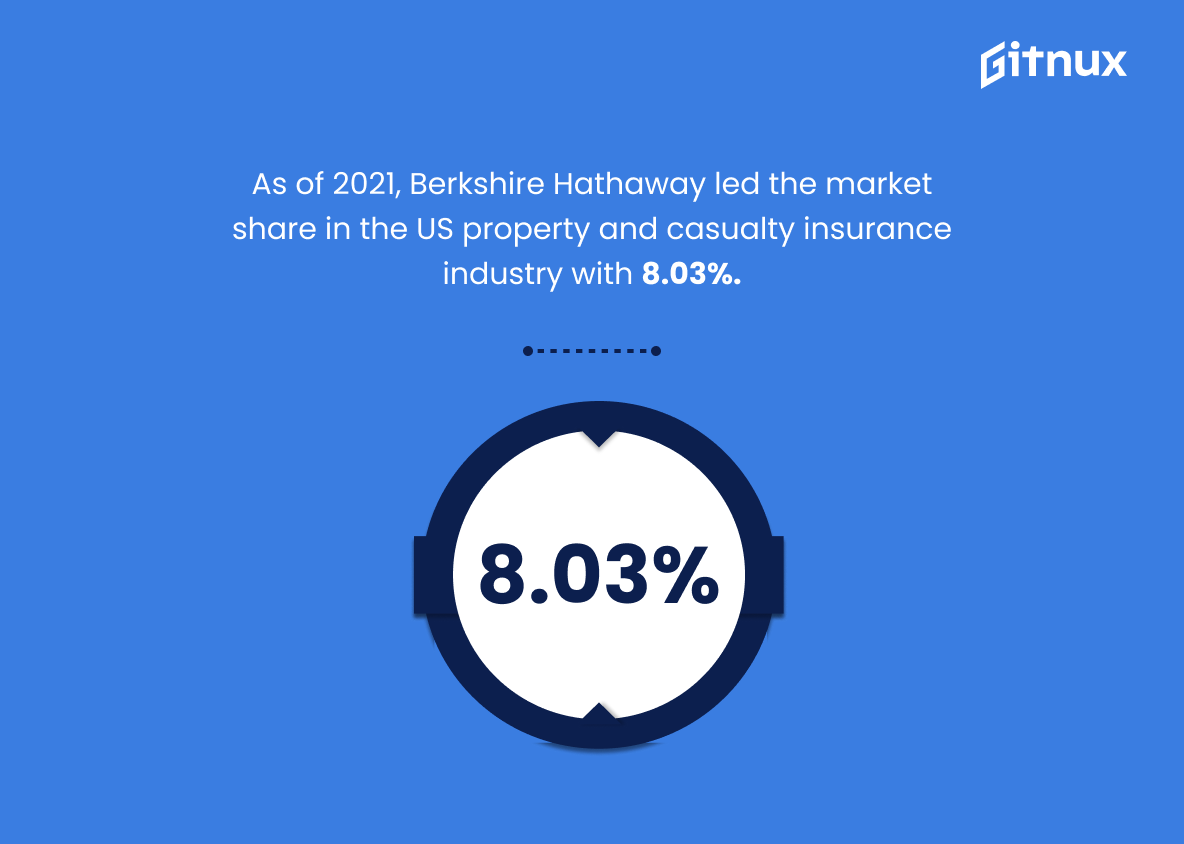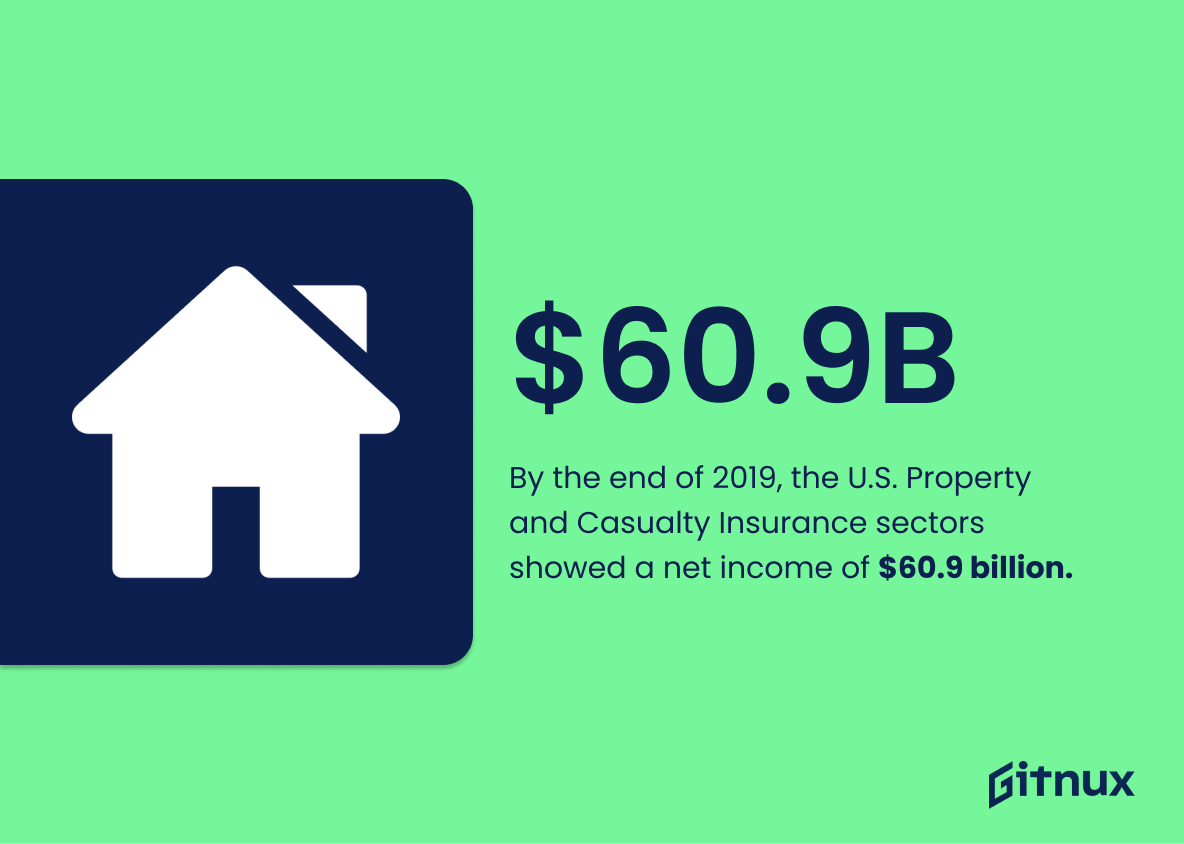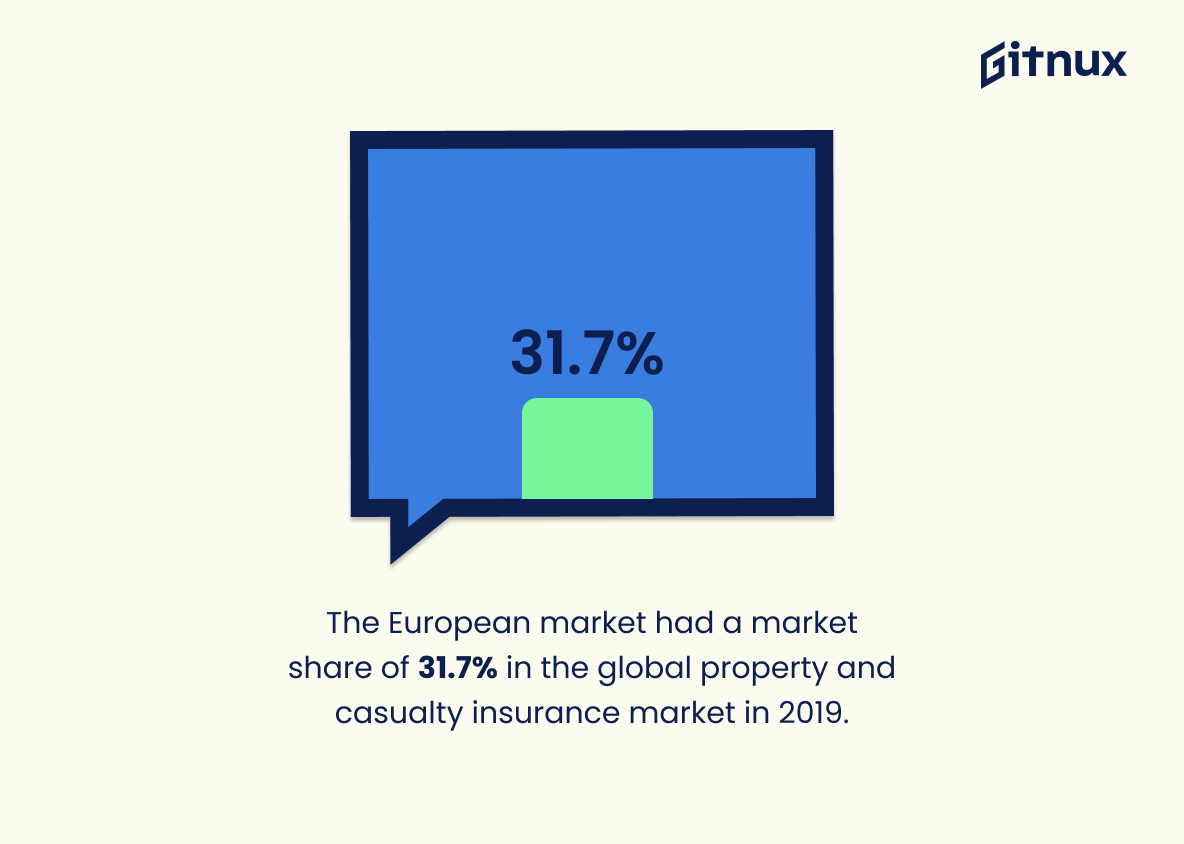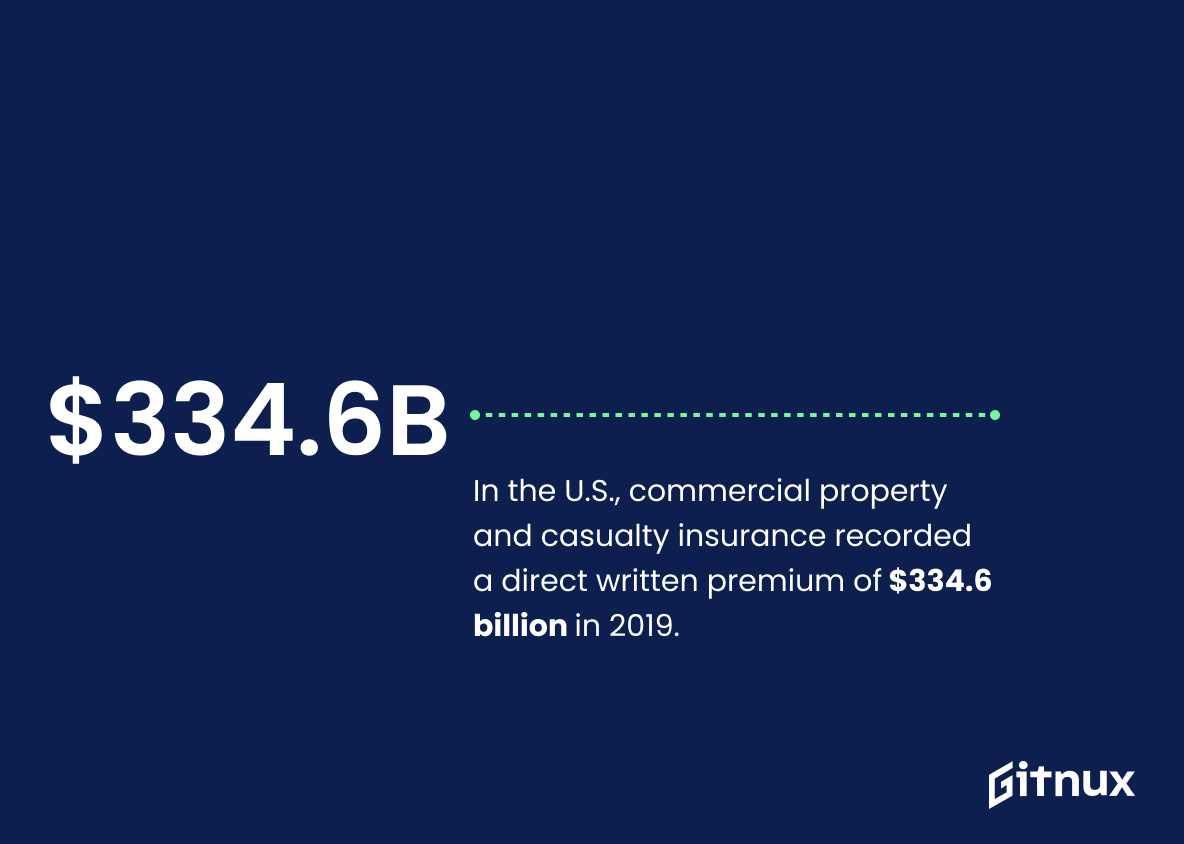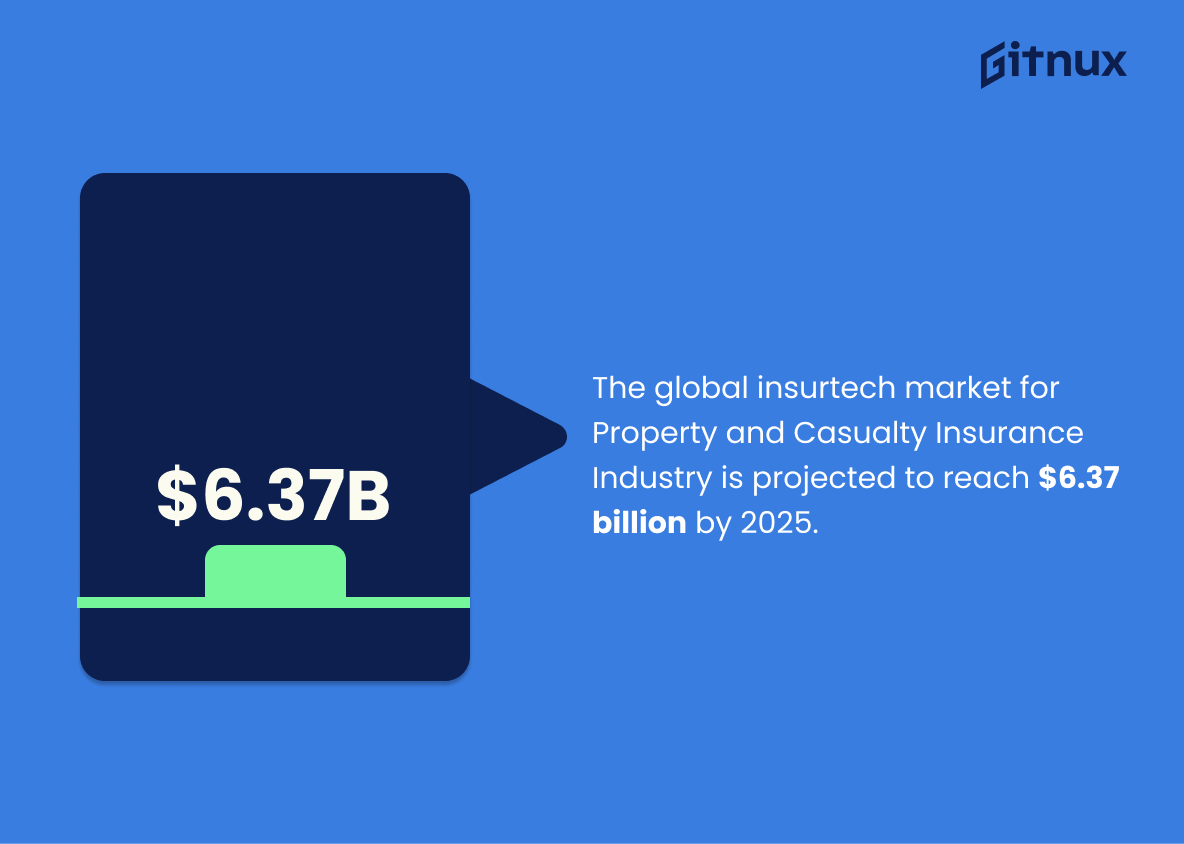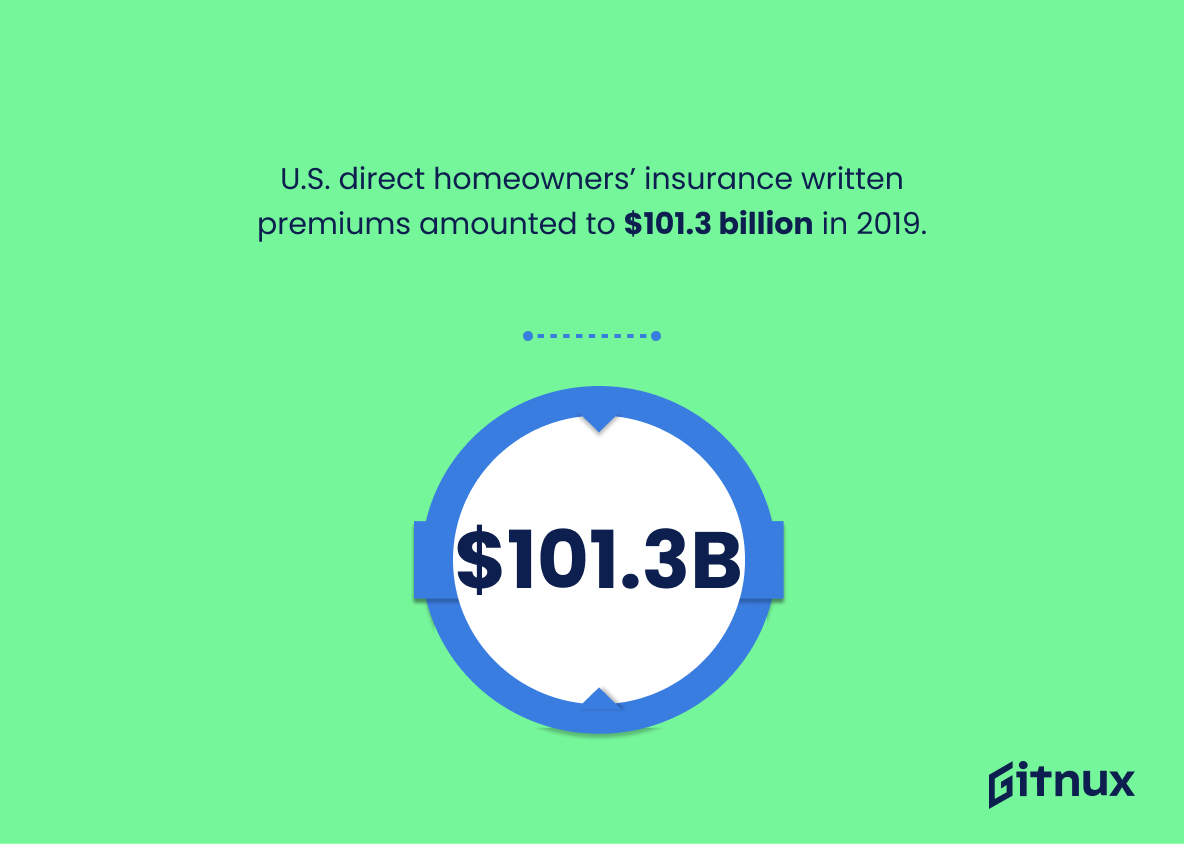The property and casualty insurance industry is a vital part of the global economy. It provides essential protection to individuals, businesses, and organizations from financial losses due to accidents, natural disasters, and other unforeseen events.
As such, it is important to stay up-to-date on the latest industry statistics. In this blog post, we’ll take a look at some of the most important property and casualty insurance industry statistics and what they mean for the industry. We’ll also discuss some of the trends that are shaping the industry and how they may affect you.
Property And Casualty Insurance Industry: The Most Important Statistics
The number of people employed in the property and casualty insurance industry in the United States has decreased in 2021, with State Farm leading the market with almost 10% of the market share and revenues close to 80 billion U.S. dollars.
The U.S. property and casualty insurance industry had net premiums of 713.97 billion U.S. dollars in 2021.
Property And Casualty Insurance Industry Statistics Overview
In 2021, State Farm Insurance was the leading mutual property and casualty insurance company in the United States, with Nationwide as the second largest company.
This shows the growth of the industry over the past decade, as well as the number of people employed in the sector, which has varied considerably over the same period.
The Property and Casualty Insurance Market in the United States is expected to achieve a CAGR of 6% during the forecast period, despite the disruptions caused by the COVID-19 pandemic, rising costs and inflation, and a stressed global supply chain.
Thus, the United States is still performing well despite the challenges of the pandemic and other economic disruptions. It also indicates that the sector is in a stable position and is likely to continue to grow in the coming years.
In 2021, investments of American property and casualty insurers totaled approximately 2.2 trillion U.S. dollars.
This growth indicates that the industry is healthy and that insurers are investing in the industry to ensure its continued success. Insurers are confident in the future of the industry and are willing to invest in it.
Property and casualty insurers invested 1.17 trillion US dollars in bonds in 2021.
There is a trend of investments in the property and casualty insurance industry over the years, which can be used to inform decisions about future investments.
The number of people employed in the property and casualty insurance industry in the United States has decreased in 2021, with State Farm leading the market with almost 10% of the market share and revenues close to 80 billion U.S. dollars.
The insurance industry has seen significant growth in employment since 1960, with an increase of around 300,000 employees each decade until 2000, when the number of employees declined from 2.35 million to 2.34 million.
In 2014, some recovery and growth in employment was seen, and in 2021, there were approximately 2.8 million employees in the industry.
The industry is continuing to expand and create jobs, despite the decline in the number of employees between 2000 and 2010. This is likely due to increasing numbers of agents, brokers and service employees in the industry, which has been positive since 2010.
Private passenger auto insurance premiums accounted for 40% of all property and casualty insurance premiums written in the US in 2020.
It shows that auto insurance is the largest segment of the industry and is responsible for the majority of premiums written.
The U.S. property and casualty insurance industry had net premiums of 713.97 billion U.S. dollars in 2021.
The Property, Casualty and Direct Insurance Market in the United States is projected to reach 850 billion U.S. dollars in 2022. This growth is also indicative of the increasing demand for insurance products and services, as well as the increasing cost of insurance premiums.
Another statistic shows that Chubb Ltd. had a 5.6% market share of direct commercial lines insurance premiums written in the United States in 2021.
The global property and casualty insurance market was valued at $1,610.66 billion in 2019.
This highlights the sheer scale of the industry and the potential for growth and development. It also serves as a reminder of the importance of the industry in providing financial protection and security to individuals and businesses around the world.
The Property and Casualty Insurance Industry has grown approximately 3.7% per year, between 2015 and 2020.
The industry has been able to consistently increase its size and reach, indicating that it is a reliable and profitable sector. This is great news for those looking to invest in the industry, as it suggests that the industry is likely to continue to grow in the future.
As of 2021, Berkshire Hathaway led the market share in the US property and casualty insurance industry with 8.03%.
The company has been able to capture a significant portion of the market share, indicating that it is a major player in the industry. This statistic is important to include in a blog post about Property And Casualty Insurance Industry Statistics as it provides a snapshot of the current state of the industry and highlights the success of one of its major players.
By the end of 2019, the U.S. Property and Casualty Insurance sectors showed a net income of $60.9 billion.
The industry was able to generate a net income of $60.9 billion. This is a significant figure that highlights the strength of the industry and its ability to generate profits. It is an important statistic to consider when discussing the Property and Casualty Insurance Industry Statistics.
The European market had a market share of 31.7% in the global property and casualty insurance market in 2019.
The European market was able to capture a significant portion of the global market share, indicating that the industry is thriving in the region. This is an important statistic to consider when discussing the overall health of the property and casualty insurance industry.
In the U.S., commercial property and casualty insurance recorded a direct written premium of $334.6 billion in 2019.
The industry is a major contributor to the economy, generating billions of dollars in premiums each year. This statistic is a valuable insight into the industry and provides a useful benchmark for comparison with other industries.
The global insurtech market for Property and Casualty Insurance Industry is projected to reach $6.37 billion by 2025.
By 2025, the global insurtech market for this industry is expected to reach a staggering $6.37 billion, which is a testament to the growth and development of the sector. This statistic is a powerful reminder of the immense opportunities that the Property and Casualty Insurance Industry holds for businesses and investors alike.
U.S. direct homeowners’ insurance written premiums amounted to $101.3 billion in 2019.
The industry is a major contributor to the economy, with direct homeowners’ insurance written premiums amounting to a staggering $101.3 billion in 2019. This figure is a clear indication of the industry’s size and influence, and serves as a reminder of the vital role it plays in protecting people and their property.
Net premiums in the U.S. Property and Casualty Insurance Industry recorded growth from $558.2 billion in 2017 to $597.9 billion in 2018.
The industry is growing and expanding, which is a great sign for the future of the industry. This growth is likely due to increased demand for insurance products, as well as improved efficiency and cost-effectiveness in the industry. This is great news for those involved in the industry, as it means more opportunities for growth and success.
In 2021, 32.6% of insurance professionals in the Property and Casualty Insurance industry are women.
The industry is making strides towards a more diverse and inclusive workplace, which is essential for the success of any industry. This statistic is also important to highlight in order to encourage more women to pursue careers in the Property and Casualty Insurance industry, as it shows that there is a place for them in the industry.
The Canadian property and casualty insurance industry saw an increase in its net claims and adjustment expenses from 32.3 billion CAD in 2016 to 38.5 billion CAD in 2018.
The industry has seen a significant increase in net claims and adjustment expenses over the past two years, suggesting that the industry is facing more financial strain than before. This is an important statistic to consider when discussing the current state of the industry and its future prospects.
In 2017, approximately 1.292 million people were employed in the U.S. Property and Casualty Insurance Industry.
The industry is a major employer, providing jobs to over a million people in 2017. This is an important indicator of the industry’s economic impact and its importance to the US economy.
As of 2018, there were 2,815 insurance companies for property and casualty in the United States.
With nearly 3,000 companies offering coverage, it’s clear that this is a major industry with a wide range of options for consumers. This statistic is a great starting point for anyone looking to learn more about the industry and the various companies that make up the market.
In 2019, emerging markets made up roughly 24% of global property and casualty insurance premiums.
These markets are becoming increasingly influential in the industry, and that insurers are recognizing the potential of these markets and investing in them. This is an important trend to be aware of, as it could have a significant impact on the industry in the future.
Cyber insurance, a sub-category of property and casualty insurance, is predicted to grow at a 26.3% CAGR between 2021-2026.
With the rapid growth of digital technology, cyber insurance is becoming an essential component of any comprehensive insurance plan. The 26.3% CAGR indicates that the demand for cyber insurance is growing rapidly, and companies must be prepared to meet this demand in order to remain competitive in the industry.
In 2020, State Farm held the largest U.S. personal auto insurance market share at 16.2%.
This demonstrates the immense power and influence of State Farm in the U.S. personal auto insurance market. With a market share of 16.2%, State Farm is the clear leader in the industry, and its success serves as an example for other companies in the industry.
The global property and casualty insurance market is projected to reach $269 billion by the end of 2020.
This figure highlights the importance of the industry and its potential for further expansion in the coming years. It also serves as a reminder of the need for businesses to invest in property and casualty insurance to protect their assets and ensure their financial security.
The Indian property and casualty insurance sector is projected to grow at CAGR of 22.5% from 2017–2025.
The industry is expected to experience a rapid growth in the coming years, making it an attractive investment opportunity for those looking to capitalize on the booming industry. With such a promising outlook, it is no wonder that the Property and Casualty Insurance Industry Statistics are so important.
In 2019, the global distribution of property and casualty insurance was 40.4% European companies, 35.5% North American companies, and 23.9% Asian Pacific companies.
The majority of the industry is concentrated in Europe and North America, with a smaller portion in the Asian Pacific region. This information can be used to draw conclusions about the industry’s global reach and the potential for growth in different regions.
The U.S. direct property and casualty insurance carriers’ market size was valued at $851.1 billion in 2020.
This highlights the sheer magnitude of the industry and the potential for growth and development within it. It also serves as a reminder of the importance of the industry in the U.S. economy and its role in providing financial security to individuals and businesses.
Conclusion
The property and casualty insurance industry is an important part of the global economy. It provides financial protection for individuals, businesses, and organizations in the event of a loss or damage due to a variety of risks. The industry is constantly evolving and adapting to the changing needs of its customers.
The industry is also highly competitive, with companies competing to provide the best coverage and pricing for their customers. The statistics presented in this blog post provide an overview of the industry and its current trends. It is clear that the property and casualty insurance industry is an important part of the global economy and will continue to be so in the future.
References
1 – https://www.statista.com/statistics/185365/revenue-of-leading-mutual-property-casualty-insurance-companies/
2 – https://www.mordorintelligence.com/industry-reports/property-casualty-insurance-market-in-usa-global
3 – https://www.statista.com/statistics/217242/total-investments-of-us-property-and-casualty-insurers/
4 – https://www.statista.com/statistics/215209/number-of-us-property-and-casualty-insurance-employees/
5 – https://www.statista.com/statistics/194233/aggregate-number-of-insurance-employees-in-the-us/
6 – https://www.statista.com/statistics/447946/distribution-of-net-premiums-written-by-pc-insurance-usa-by-line/
7 – https://www.statista.com/statistics/218589/total-premiums-written-of-us-property-and-casualty-insurance/
8 – https://www.statista.com/statistics/1040495/property-casualty-direct-insurance-market-size-usa/
9 – https://www.statista.com/statistics/186464/leading-us-commercial-lines-insurance-by-market-share/
10 – https://www.transparencymarketresearch.com
11 – https://www.globenewswire.com
12 – https://www.prnewswire.com
13 – https://www.ibisworld.com
14 – https://www.iii.org
15 – https://www.mordorintelligence.com
16 – https://www.iea.org
17 – https://www.statista.com
18 – https://www.business-standard.com
19 – https://www.naic.org
20 – https://www.swissre.com
